When it comes to synagogue communities there is an easy way to count and a hard way. The easy way to count at CSS would be to say we have approximately 420 paid family units, with approximately 50-60 attendees pre-Covid on an average Friday night and around 600 attendees during High Holy Days. We could go on and count our annual budget, staffing size, and religious school numbers. And, in the end, we would know we are a small to mid-sized Reform congregation and a large Reconstructionist one. But, there are countless other ways to approach it, especially post-Covid. There are the social media views, our volunteer force, and our count of those in need. These numbers are murkier and more fluid. Suddenly we are pulling in people that are not necessarily paid members, nor do they even necessarily live in our geographic region.
The Book of Numbers or Bamidbar, begins with a similar communal assessment, although unlike ours, one with a very specific focus in mind. This is the point in the journey where we are beginning to make preparations for war, so the people counted are only males twenty years and older. After going through each and every tribe the final number comes to 603,550, from which we can extrapolate that there were close to two million total people wondering the wilderness with Moses. For statisticians, it is both amazing to have these figures at all, and horrifying to see who was left off: namely the women, slaves and minors who fit into the invisible section of ancient Israelite life.
While our blind spots today are not quite as large as those of our ancestors, this does not make them any less significant. I tend to think of CSS not as a large conglomerate of people, but as hundreds of individuals that connect in a myriad if different ways. My goal as rabbi is to reach as many of you as possible in as many ways as I possibly can. It is easy to feel left off the communal map. I know because growing up my family often felt this way. Philadelphia was an immense Jewish community with approximately a quarter million Jews, and we lived in a section of the city, West Philadelphia, with very little Jewish presence at all. My wife, Ashirah, likewise grew up on the fringes of community in rural Fort Washington and Blue Bell. Today both of those places have seen a resurgence of Jews, but this was certainly not the case when we were growing up. Possibly, because of this I believe it is my duty to make anyone who comes in our physical or virtual doors feel at home. As hard as it is, to really judge community we must look at the micro and not macro level, engaging each and every person as an individual striving in their own way to find their communal home. To each and every one of you reading these words, I am grateful you have joined us in our journey.
Shabbat Shalom,
Rabbi Alex
